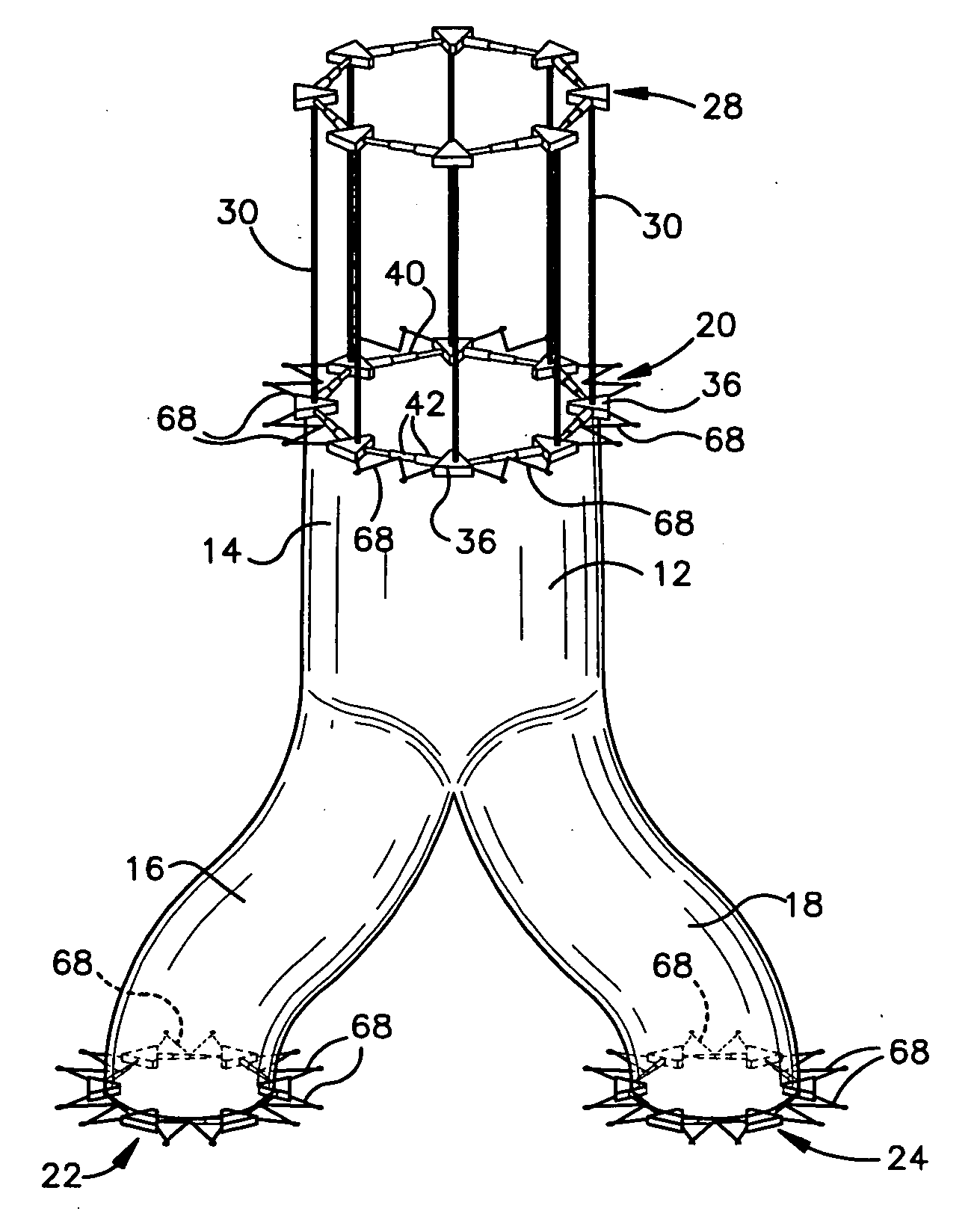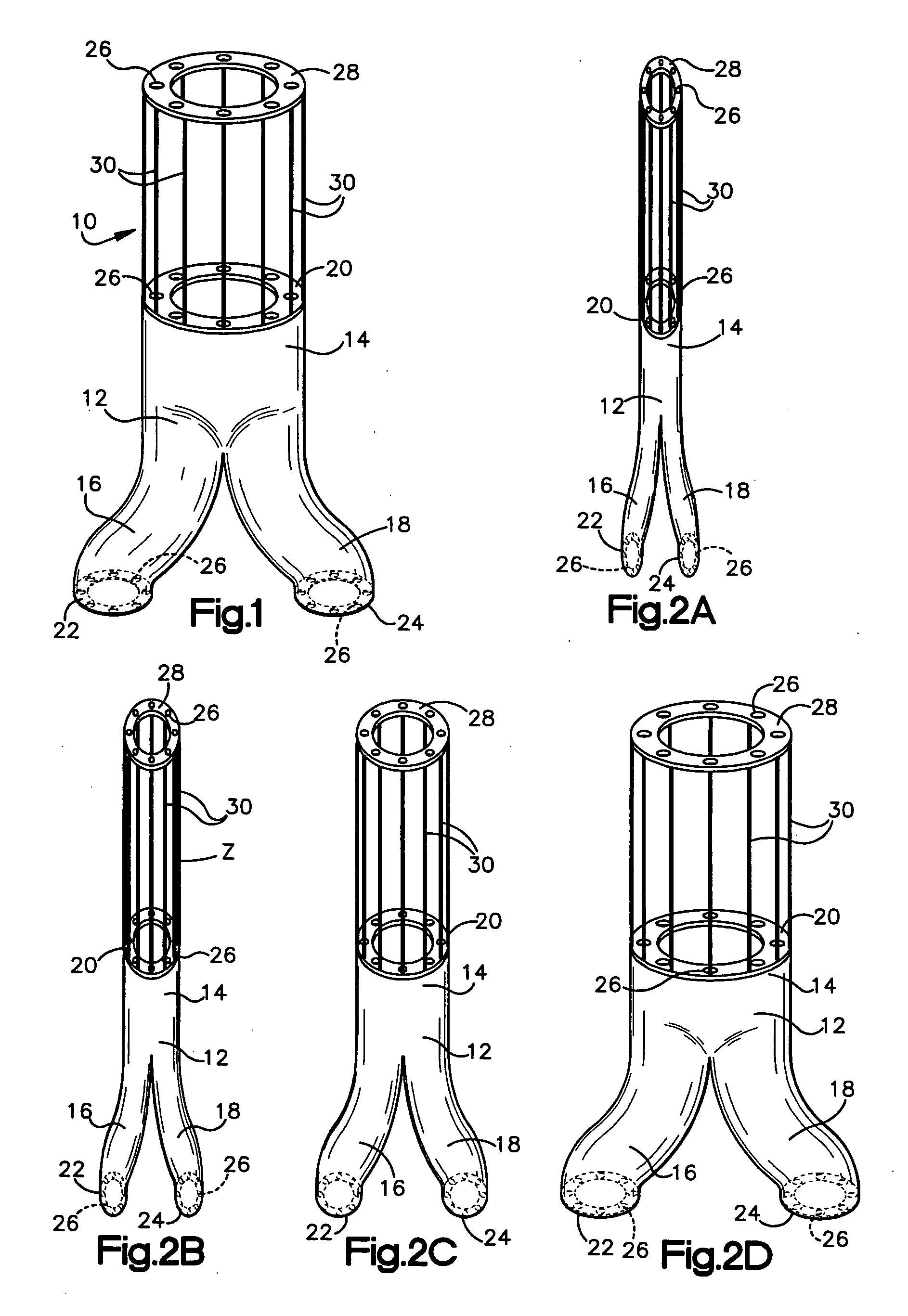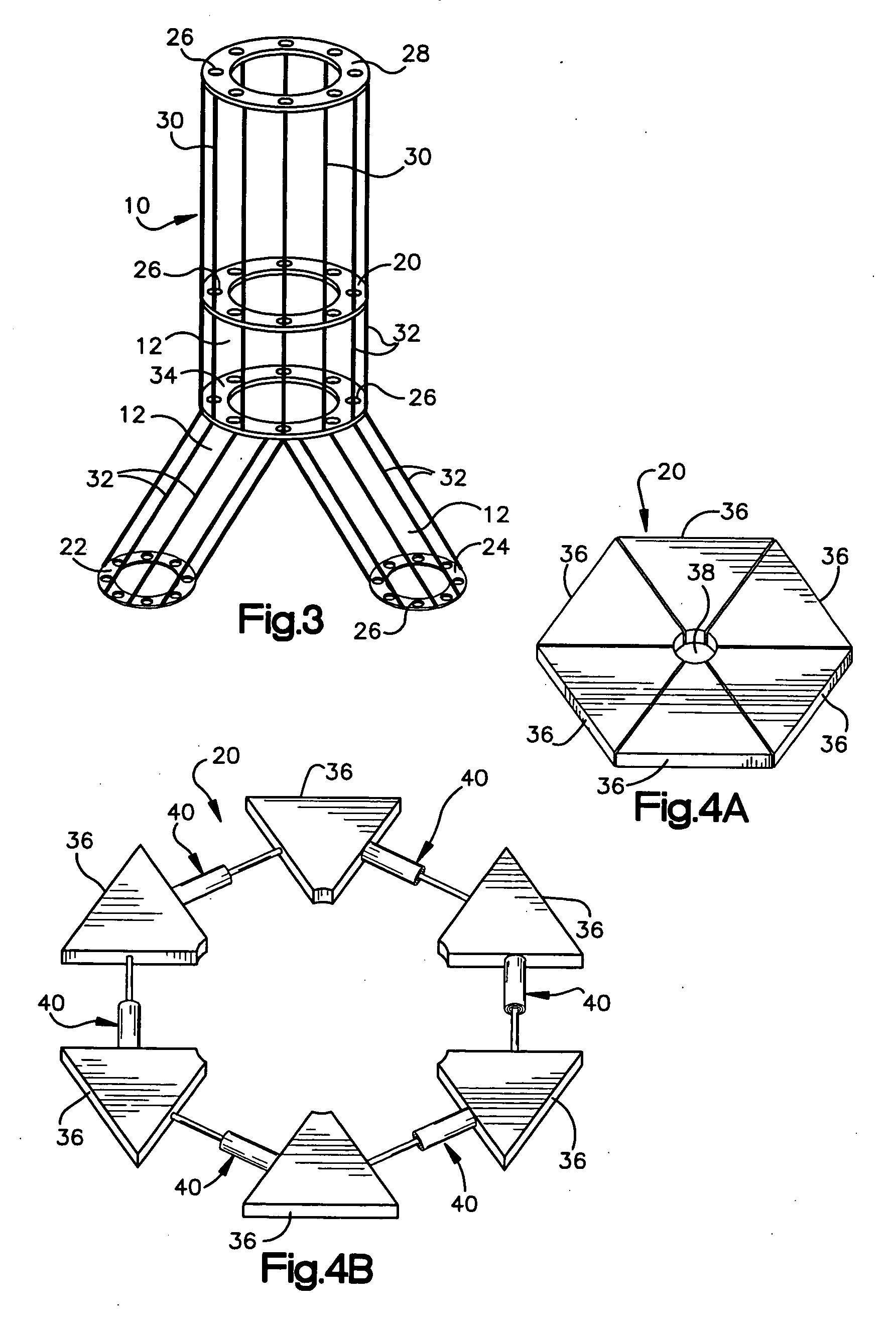Percutaneous endovascular apparatus for repair of aneurysms and arterial blockages
an endovascular apparatus and percutaneous technology, applied in the field of endovascular equipment for the treatment of aneurysms or arterial blockages, can solve the problems of not being ideally suited to use with endovascular grafts, and none of the proposed attachment devices
- Summary
- Abstract
- Description
- Claims
- Application Information
AI Technical Summary
Benefits of technology
Problems solved by technology
Method used
Image
Examples
Embodiment Construction
[0038] An endovascular apparatus 10 according to a first aspect is shown in FIG. 1. The endovascular apparatus 10 includes a tubular sleeve 12 having a cranial end 14, a first caudal branch 16, and a second caudal branch 18. In other embodiments, termed “uni-iliac”devices, the tubular sleeve 12 may include only a single caudal branch. The tubular sleeve may be made from DACRON, ePTFE, peritoneum, fascia, or other common graft material so as to form a flow path for by-passing an aneurysm.
[0039] The endovascular apparatus 10 further includes a first expandable attachment device 20 attached to the cranial end 14 of the tubular sleeve 12, a second expandable attachment device 22 attached to the first caudal branch 16 of the tubular sleeve 12, and a third expandable attachment device 24 attached to the second caudal branch 18 of the tubular sleeve 12. The expandable attachment devices 20, 22, 24 may include holes 26 which may be sewn or sutured to the tubular sleeve 12. Alternatively, i...
PUM
 Login to View More
Login to View More Abstract
Description
Claims
Application Information
 Login to View More
Login to View More - R&D
- Intellectual Property
- Life Sciences
- Materials
- Tech Scout
- Unparalleled Data Quality
- Higher Quality Content
- 60% Fewer Hallucinations
Browse by: Latest US Patents, China's latest patents, Technical Efficacy Thesaurus, Application Domain, Technology Topic, Popular Technical Reports.
© 2025 PatSnap. All rights reserved.Legal|Privacy policy|Modern Slavery Act Transparency Statement|Sitemap|About US| Contact US: help@patsnap.com



